Thingiverse

Underhill Mars Base by Euge
by Thingiverse
Last crawled date: 3 years ago
Underhill Mars Base:
In this model I took the approach of examining both the very large view of what overarching technologies and methods make the most sense to pursue on a permanent mars base, and the very small view of what the life and development at such a base might be like from a human perspective. The name “Underhill” is an homage to the first mars settlement in Kim Stanley Robinson's Red Mars Trilogy, a series of books that I would recomend to anyone, and from which I drew a lot of inspiration.
The tightest bottlenecks to a permanent base on Mars are the high cost of sending material from earth, and the very limited amounts of both freely available energy (solar cells only get 30%-50% of the sunlight available on earth) and key materials on the surface (no convenient lakes or thick atmosphere to pull water from, no mining/smelting infrastructure, etc..). Nuclear power will be the key to figuratively pouring this Mars base out of the proverbial bottle. Mars has a long history of using nuclear power sources in the form of Radioisotope Thermoelectric Generators (RTG’s), like the 125 Watt version on the Curiosity rover. A fission reactor that can output ~3 orders of magnitude more power through the use of several redundant, highly efficient Stirling engines with radiator arrays, opens up a lot of opportunities for using locally available resources that would otherwise be too energy intensive.
The base would be located in a cliff face or a rock outcropping of some sort that presents easy access to an automated tunneling machine. The tunneling machine would bore a series of parallel tunnels into the cliff face, the ends of which will be sealed off to make them airtight. The inner surface of the tunnels will be reinforced with either curved plates, sintered out of the available regolith or by partially melting and fusing the inner surface with lasers directly during the boring process. The many meters of stone and regolith above the tunnels will provide plenty of insulation from the ambient cosmic radiation on the surface. Waste heat from the powerplant will be used to heat the habitat. Using tunnels as the main habitat structure makes adding living, farming and work space to the base just a matter of time and energy, once the initial investment of the tunnel boring machine is made, and can be expected to be a lot more robust and secure than any possible surface structure. The floors of the tunnels will initially come as pre-fabed modular units and will provide plenty of space for all of the necessary plumbing, wiring, and life-support infrastructure. All of the food can be grown hydroponically in specialized tunnel sections with the aid of artificial LED lighting for optimal productivity.
Some initial amount of water and oxygen will be brought from earth, the rest can be extracted from the thin atmosphere and from the rocks excavated during the tunnel construction. Spare parts and new machinery can be limited to electronics, optics, and extremely intricate components, the rest can be 3D printed on the spot out of metal or plastic as needed from a common stock of raw printing material. To close the loop, any broken or no longer needed components (such as parts of the landing vehicles) can be recycled by grinding and reprocessing them into raw 3D printing material.
Once the initial, minimal base is established in the tunnels, a larger, external common structure can be constructed out of inflatable components, reinforced with sintered regolith blocks. This common structure would unify all of the disparate tunnels, and provide a place for the inhabitants to gather, share meals and entertainment, with plenty of windows onto the surface of Mars.
In this model I took the approach of examining both the very large view of what overarching technologies and methods make the most sense to pursue on a permanent mars base, and the very small view of what the life and development at such a base might be like from a human perspective. The name “Underhill” is an homage to the first mars settlement in Kim Stanley Robinson's Red Mars Trilogy, a series of books that I would recomend to anyone, and from which I drew a lot of inspiration.
The tightest bottlenecks to a permanent base on Mars are the high cost of sending material from earth, and the very limited amounts of both freely available energy (solar cells only get 30%-50% of the sunlight available on earth) and key materials on the surface (no convenient lakes or thick atmosphere to pull water from, no mining/smelting infrastructure, etc..). Nuclear power will be the key to figuratively pouring this Mars base out of the proverbial bottle. Mars has a long history of using nuclear power sources in the form of Radioisotope Thermoelectric Generators (RTG’s), like the 125 Watt version on the Curiosity rover. A fission reactor that can output ~3 orders of magnitude more power through the use of several redundant, highly efficient Stirling engines with radiator arrays, opens up a lot of opportunities for using locally available resources that would otherwise be too energy intensive.
The base would be located in a cliff face or a rock outcropping of some sort that presents easy access to an automated tunneling machine. The tunneling machine would bore a series of parallel tunnels into the cliff face, the ends of which will be sealed off to make them airtight. The inner surface of the tunnels will be reinforced with either curved plates, sintered out of the available regolith or by partially melting and fusing the inner surface with lasers directly during the boring process. The many meters of stone and regolith above the tunnels will provide plenty of insulation from the ambient cosmic radiation on the surface. Waste heat from the powerplant will be used to heat the habitat. Using tunnels as the main habitat structure makes adding living, farming and work space to the base just a matter of time and energy, once the initial investment of the tunnel boring machine is made, and can be expected to be a lot more robust and secure than any possible surface structure. The floors of the tunnels will initially come as pre-fabed modular units and will provide plenty of space for all of the necessary plumbing, wiring, and life-support infrastructure. All of the food can be grown hydroponically in specialized tunnel sections with the aid of artificial LED lighting for optimal productivity.
Some initial amount of water and oxygen will be brought from earth, the rest can be extracted from the thin atmosphere and from the rocks excavated during the tunnel construction. Spare parts and new machinery can be limited to electronics, optics, and extremely intricate components, the rest can be 3D printed on the spot out of metal or plastic as needed from a common stock of raw printing material. To close the loop, any broken or no longer needed components (such as parts of the landing vehicles) can be recycled by grinding and reprocessing them into raw 3D printing material.
Once the initial, minimal base is established in the tunnels, a larger, external common structure can be constructed out of inflatable components, reinforced with sintered regolith blocks. This common structure would unify all of the disparate tunnels, and provide a place for the inhabitants to gather, share meals and entertainment, with plenty of windows onto the surface of Mars.
Similar models
thingiverse
free

Mars Inflatable Habitat by patricktverse
... would be manufactured and then sent to mars. once on mars the pieces are assembled to create a habitat which would be inflated.
3dwarehouse
free

The First City On Mars
... earth to mars, we can build cubical structures in cubes and rectangles to build energy efficient buildings for habitats on mars.
3dwarehouse
free

Mars landers - vertical WIP
...oposed mars base architecture should the inflatable habitat be toroidal or telescopic? #habitat #lander #mars #space #spaceflight
thingiverse
free

Mars Research Station Two by xmbrst
... in the photos.)
scale
--
the connector tunnels that link the inflatable habs are just big enough for a person to walk through.
thingiverse
free

The First Mars Habitat by LocksRevenge
...would have the power generating unit that would be similar to molten salt being used to make steam that...
thingiverse
free

Triple skinned concrete mars habitat by Tonyf
...constraint by printing the habitats from concrete or a similar material manufactured on mars. house printing using concrete is...
thingiverse
free

Mars Station Alpha by remoprint2013
..., more useful, secure and efficient. for example an on surface power plant would be needed long term.
thatâs my dream anyway!
3dwarehouse
free

Mars Ascent vehicle/Earth return vehicle
...f which would be required to return the vre to earth at the end of the mission. this process would take approximately ten months.
thingiverse
free
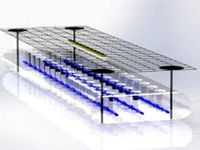
Mars Deployable Greenhouse Project by Damiana
...ned for multi-habitat. they both are deployable. the main structure is the central one. when it lands on mars surface it deploys.
thingiverse
free

Makerbot Mars Modular Multi-purpose Enclosure (M.M.M.M.E.) by MitchMaker
...rs. build a habitat inside a cave and expand outward. establish a supply chain between mars and earth.
so let's go to mars.
Euge
3dbaza
$3

Dacota Corner Electric Fireplace (67515)
...ll objects are combined into one mesh.<br>dimensions:<br>width: 950 cm<br>depth: 760 cm<br>height: 970 cm
cg_trader
$299

Eugene Airport - EUG
...- eug
cg trader
3d asset eugene airport - eug city international airport runway terminal building, ready for 3d animation and ot
3dwarehouse
free

euge
...euge
3dwarehouse
3dwarehouse
free

EUG Football 0003
...eug football 0003
3dwarehouse
structure
3dwarehouse
free

Injection nozzle
...e_3d_part_library #partcommunity #partsolutions #pedrotti #proe_wildfire #solidedge #solidworks #ugello_di_iniezione #unigraphics
Underhill
unity_asset_store
$10

The Stonehenge Monument
...your workflow with the the stonehenge monument asset from underhill labz. find this & other historic options on the...
unity_asset_store
$25

Realistic Interiors Vol1
...your workflow with the realistic interiors vol1 asset from underhill labz. find this & other interior options on the...
unity_asset_store
free

Altar Ruins Free
...your workflow with the altar ruins free asset from underhill labz. find this & other fantasy options on the...
unity_asset_store
$15

Low Poly Desert Ruins
...workflow with the low poly desert ruins asset from underhill labz. find this & other environments options on the...
unity_asset_store
$10

Low Poly Winter Lands
...workflow with the low poly winter lands asset from underhill labz. find this & other environments options on the...
unity_asset_store
free

Flat Style Vehicles Pack Free
...with the flat style vehicles pack free asset from underhill labz. find this & other vehicles options on the...
thingiverse
free

MSI RTX 3080 / 3090 VENTUS Dual 120mm Fan Heatsink Adapter / Mount by underhill
...twisty cable wires to hold each 120mm fan in place. a couple of extra wires can be used to provide extra support where required.
thingiverse
free

Flashforge Adventurer 3 - Filament guide remix by rinkel
...this is a remix of the filament guide from underhill changed for the 2020-2021 model of which the screw...
cg_trader
$109

Destroyer Escort DE-682 USS Underhill
...nd mousetraps are animateable. all materials and textures are provided as shown here. the model is provided in several formats.
Mars
3d_ocean
$10

Mars
...tar stars system universal way world
this is the mars with atmosphere. the textures file including 4 maps. thank you for looking.
turbosquid
$2

MARS
...
turbosquid
royalty free 3d model mars for download as blend on turbosquid: 3d models for games, architecture, videos. (1170651)
3ddd
free

ClassiCon Mars
...classicon mars
3ddd
classicon , mars
стул mars от classicon.
3ds max 2011 + fbx. vray.
turbosquid
$12

Mars
...id
royalty free 3d model mars for download as blend and gltf on turbosquid: 3d models for games, architecture, videos. (1659040)
turbosquid
$1

the mars
...oyalty free 3d model the mars for download as blend and blend on turbosquid: 3d models for games, architecture, videos. (1704346)
turbosquid
free

mars
...squid
royalty free 3d model mars for download as max and obj on turbosquid: 3d models for games, architecture, videos. (1355198)
turbosquid
$59

Mars
...
royalty free 3d model mars for download as max, obj, and fbx on turbosquid: 3d models for games, architecture, videos. (1259238)
turbosquid
$12

Mars
...lty free 3d model mars for download as 3ds, max, obj, and fbx on turbosquid: 3d models for games, architecture, videos. (1152228)
turbosquid
$5

Mars
...y free 3d model mars for download as obj, fbx, blend, and dae on turbosquid: 3d models for games, architecture, videos. (1292956)
3d_export
free

mars landscape
...mars landscape
3dexport
mars landscape made with word machine.
Base
archibase_planet
free
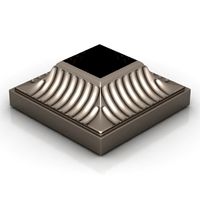
Base
...base
archibase planet
base column column base
base 1 - 3d model (*.gsm+*.3ds) for interior 3d visualization.
archibase_planet
free

Base
...base
archibase planet
base column base column
base 5 - 3d model (*.gsm+*.3ds) for interior 3d visualization.
archibase_planet
free
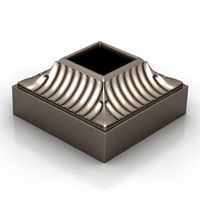
Base
...base
archibase planet
base column column base
base 7 - 3d model (*.gsm+*.3ds) for interior 3d visualization.
archibase_planet
free
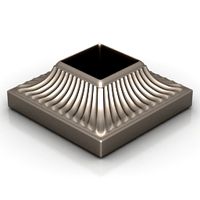
Base
...base
archibase planet
base column column base
base 2 - 3d model (*.gsm+*.3ds) for interior 3d visualization.
archibase_planet
free
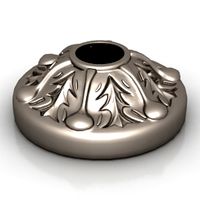
Base
...base
archibase planet
base column column base
base 3 - 3d model (*.gsm+*.3ds) for interior 3d visualization.
archibase_planet
free
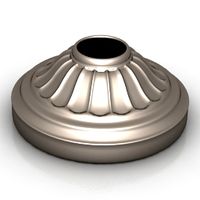
Base
...base
archibase planet
base column column base
base 4 - 3d model (*.gsm+*.3ds) for interior 3d visualization.
archibase_planet
free

Base
...base
archibase planet
base column base column
base 6 - 3d model (*.gsm+*.3ds) for interior 3d visualization.
archibase_planet
free

Base
...base
archibase planet
foundation base
column base ionic - 3d model (*.gsm+*.3ds) for interior 3d visualization.
archibase_planet
free
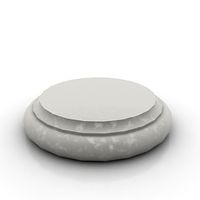
Base
...base
archibase planet
foundation base
column base tuscan - 3d model (*.gsm+*.3ds) for interior 3d visualization.
design_connected
$18

Base
...base
designconnected
tom dixon base computer generated 3d model. designed by dixon, tom.
